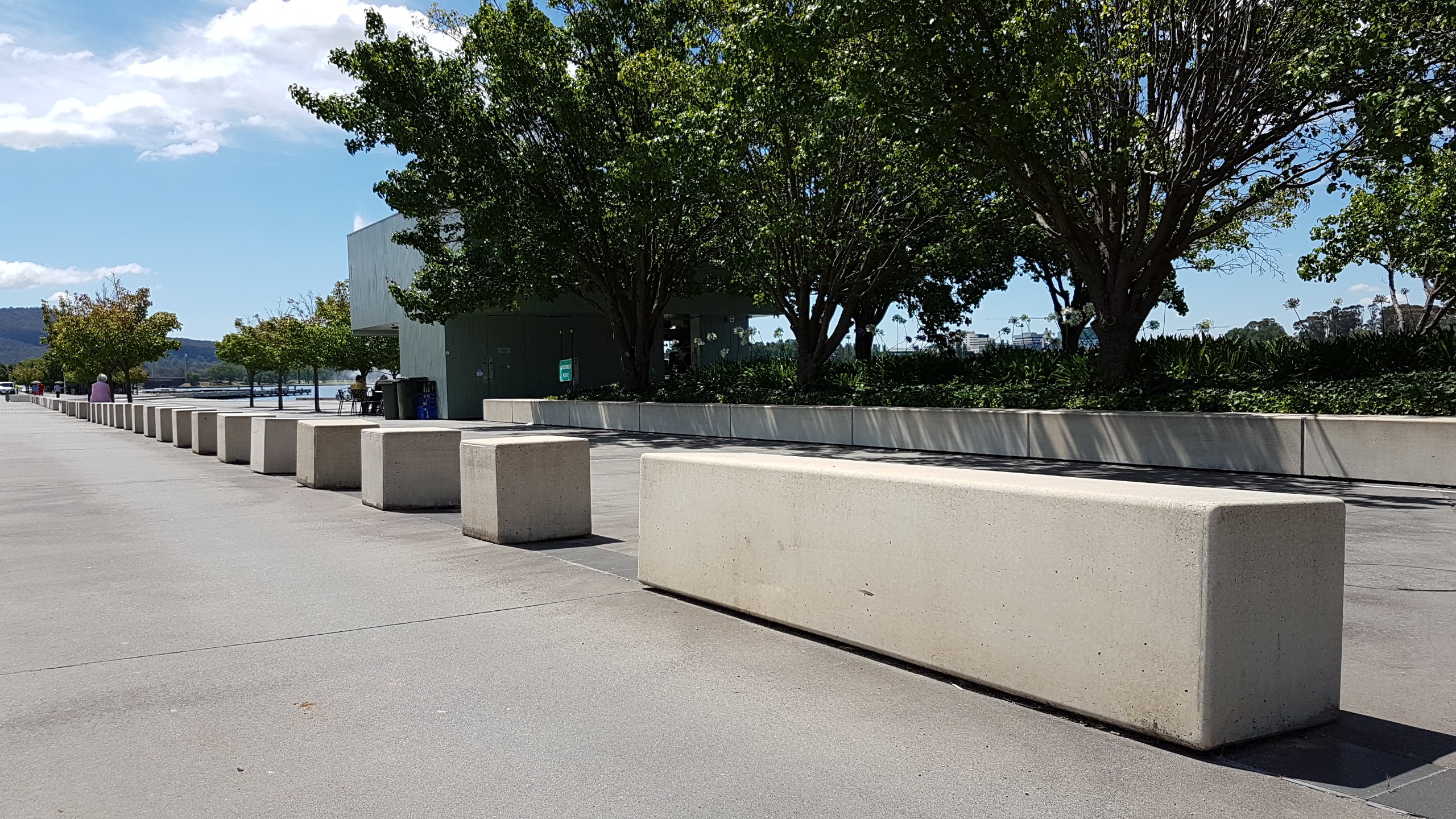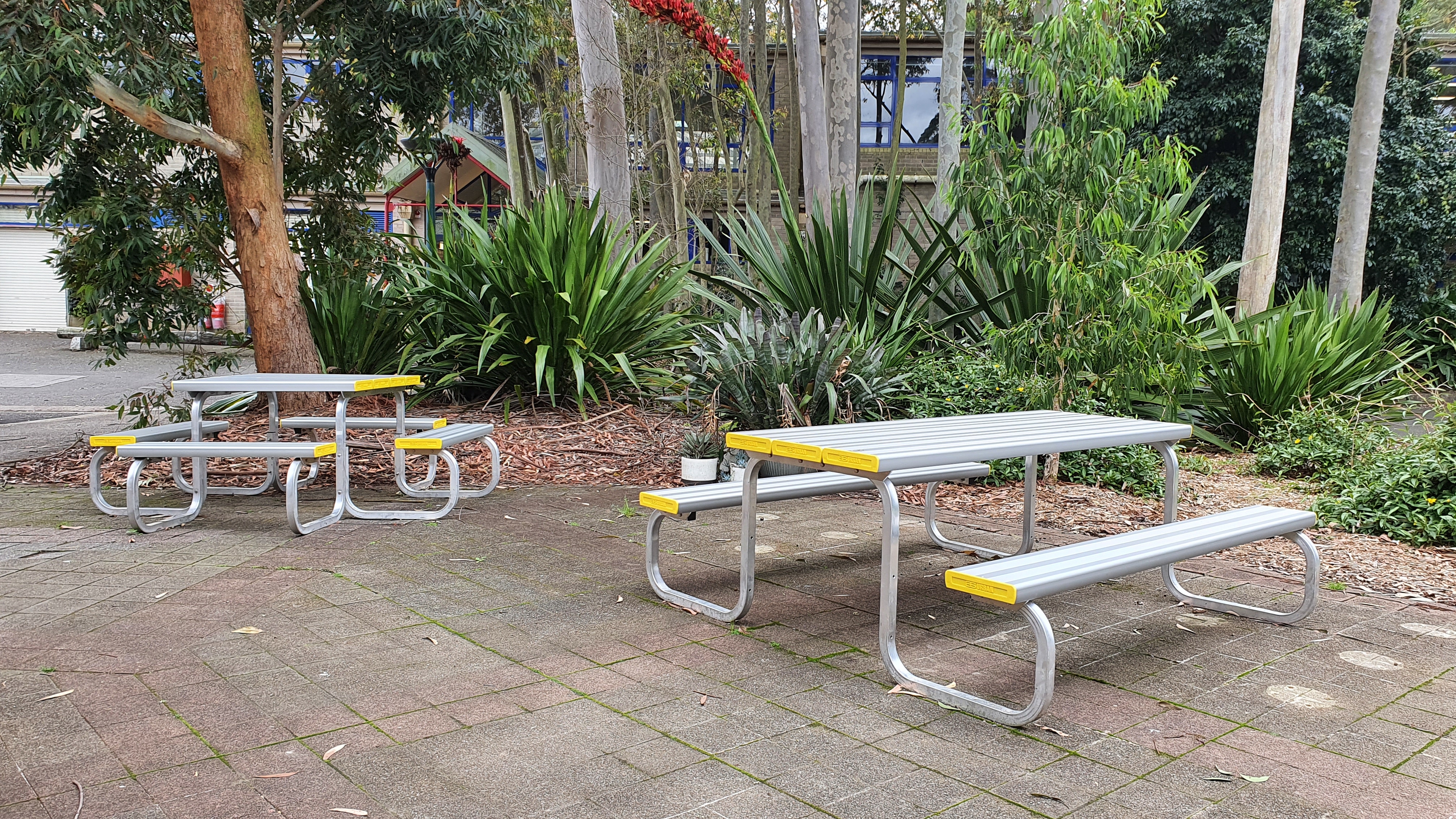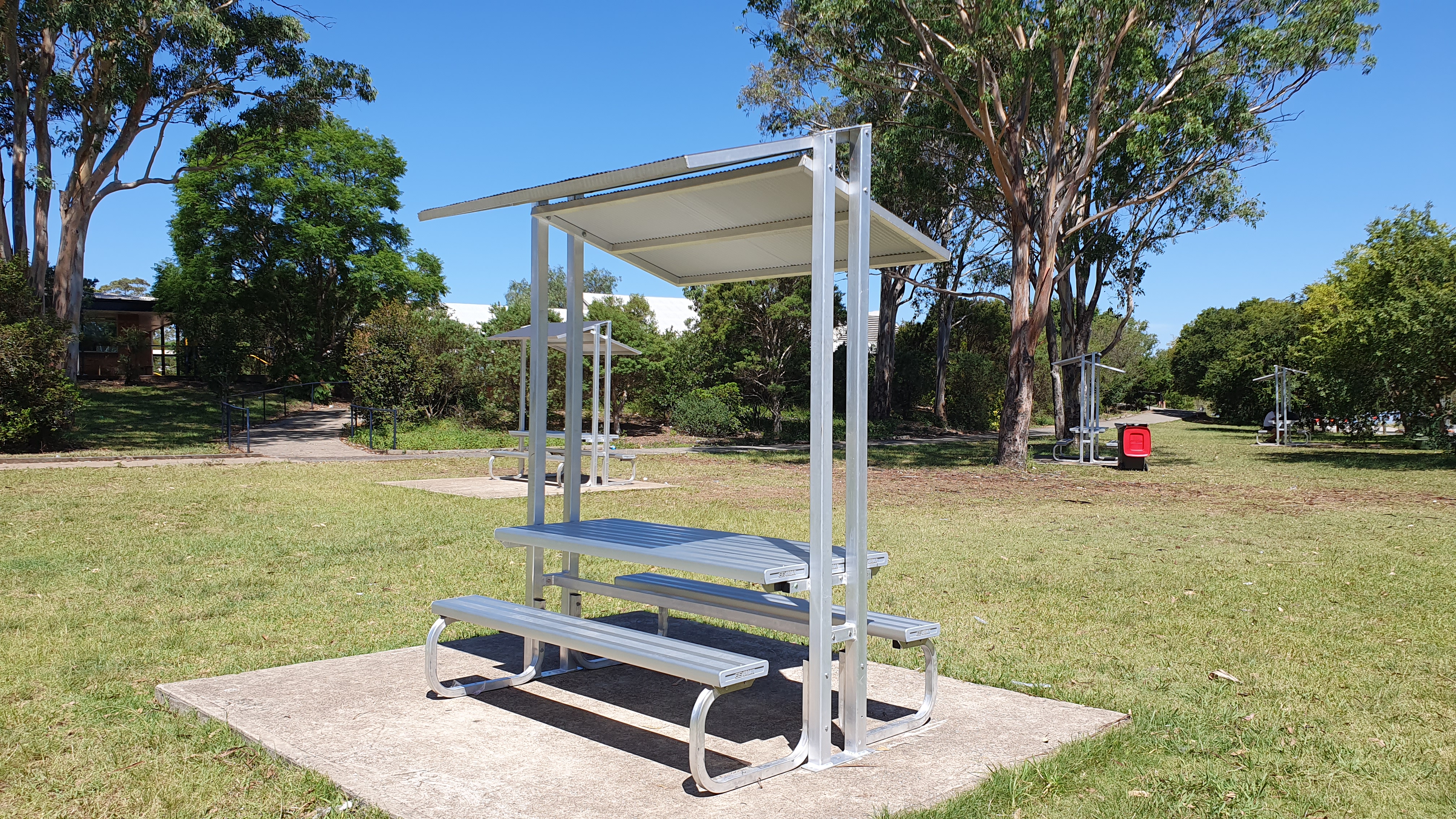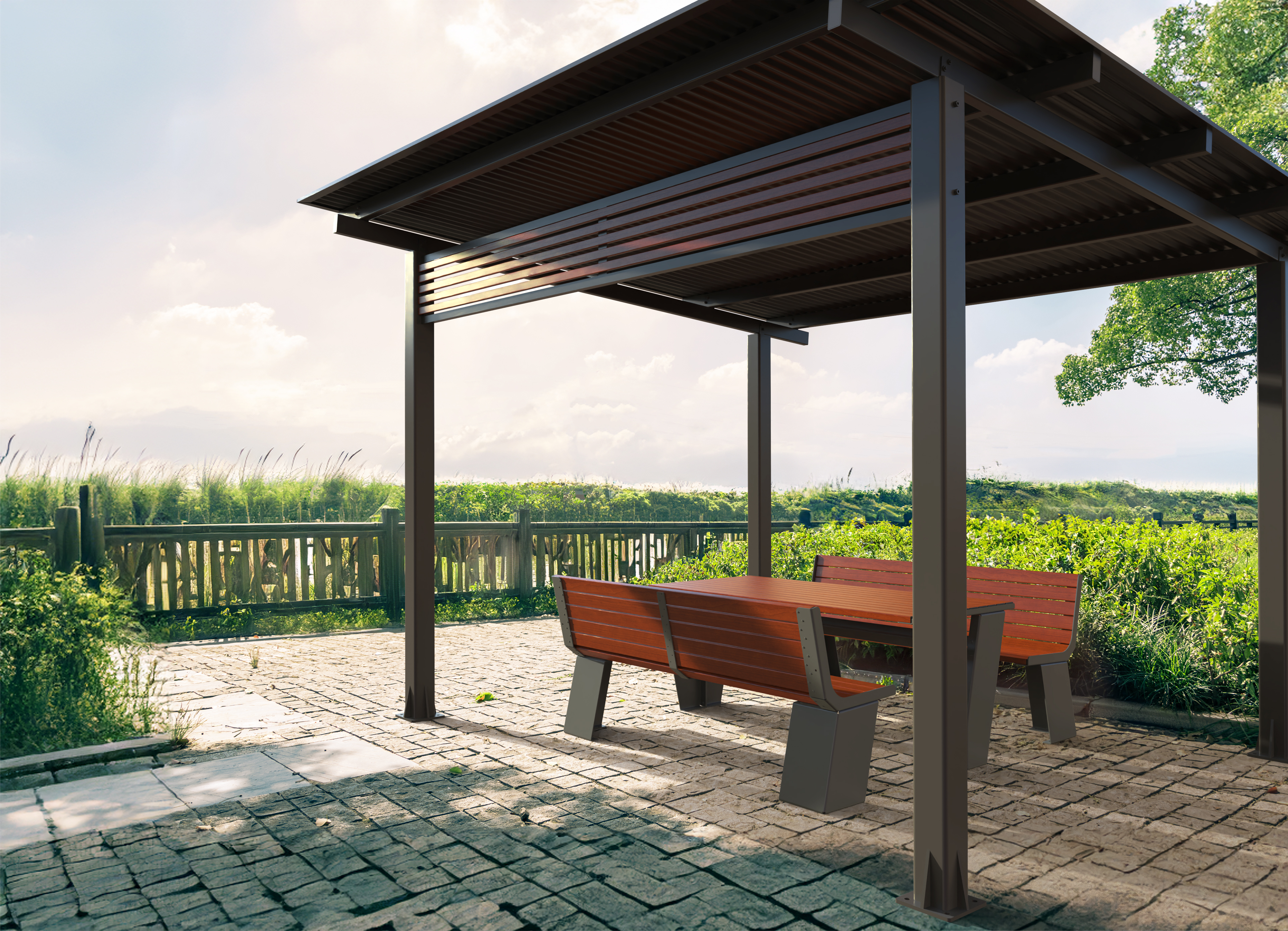Sustainable Materials in Street Furniture: Benefits and Applications




Street furniture, including benches, tables, and waste bins, maintains public spaces. The materials used in these items impact their longevity, maintenance, and environmental footprint.
As cities aim to become more sustainable, the choice of materials in street furniture is increasingly important.
This blog provides a detailed, realistic examination of various materials used in street furniture, as well as their benefits, applications, and sustainability aspects.
4 Popular Materials Used In Street Furniture
1. Stainless Steel
Stainless steel is an alloy composed primarily of iron, chromium, and nickel. Its resistance to rust and corrosion makes it a popular choice for street furniture exposed to harsh weather conditions.
According to reports, stainless steel is capable of lasting over 50 years in urban environments, provided it is maintained properly.
Benefits
● Durability: Stainless steel is highly resistant to damage from environmental elements and vandalism. It can withstand significant wear and tear, making it ideal for high-traffic areas.
● Maintenance: It requires minimal maintenance compared to other materials. A simple cleaning routine is usually sufficient to keep it looking new.
● Recallability: Stainless steel is 100% recyclable, which reduces its environmental impact when it reaches the end of its life cycle. According to the stats, approximately 90% of stainless steel is recycled globally.
Applications
● Benches: Common in parks and urban areas due to their durability and classy appearance.
● Bike Racks: Used for their strength and resistance to vandalism.
● Trash Cans: Preferred for their ease of cleaning and resistance to the elements.
2. Concrete
Concrete is a composite material made from cement, water, and combined sand or gravel. Modern concrete properties can be improved with additives. It has been a staple in construction due to its robustness and versatility.
Reportedly, concrete has an average lifespan of 30 to 50 years when properly maintained.
Benefits
● Strength: Concrete’s high compressive strength makes it suitable for heavy-use applications. It can handle significant loads without cracking.
● Low Maintenance: Once set, concrete requires little maintenance and is resistant to weathering and wear.
● Recycling: Concrete recycling can transform concrete into aggregate for new concrete mixtures, reducing its impact. The Concrete Sustainability Hub notes that recycled concrete aggregates can replace up to 25% of new aggregates in concrete mixtures.
Applications
● Benches: Often used in public parks and squares due to their durability and ability to be moulded into various shapes.
● Planters: Concrete planters are common in urban landscaping, providing sturdy and long-lasting plant containers.
● Tables: Used in outdoor settings where durability is essential.
3. Aluminium
Aluminium is a lightweight, corrosion-resistant metal often used in street furniture. It is known for its strength-to-weight ratio, which makes it easy to handle and install.
The aluminium's lifespan is 30 to 50 years, depending on environmental conditions and maintenance.
Benefits
● Lightweight: Its low weight makes aluminium furniture easier to transport and install than heavier materials like concrete.
● Corrosion Resistance: Aluminium does not rust, making it ideal for coastal or humid environments.
● Recallability: Aluminium can be recycled repeatedly without losing its properties. The U.S. Environmental Protection Agency states that recycling aluminium saves 95% of the energy required to produce new aluminium.
Applications
● Benches: Used in various public spaces for their durability and modern appearance.
● Bike Racks: Lightweight and resistant to damage, making them ideal for high-traffic areas.
● Trash Cans: Commonly used for their ease of maintenance and resistance to weather conditions.
4. Timber
Timber, often used interchangeably with wood, refers to wood that has been processed and treated for use in construction and furniture. Treated timber can resist pests and weathering, extending its lifespan.
Studies have shown that timber furniture can last between 20 and 50 years, depending on the treatment and maintenance.
Benefits
● Sustainability: When sourced from certified sustainable forests, timber is a renewable resource.
● Aesthetic Flexibility: Timber can be finished in various ways to achieve different looks, from rustic to contemporary.
● Strength: Properly treated timber is strong and can support significant weight.
Applications
● Benches: Benches are used in parks and outdoor spaces for businesses and recreational areas for their natural appearance and durability.
● Tables: Suitable for outdoor dining and gathering spaces due to their strength and aesthetic appeal.
● Playground Equipment: Utilised for structures like slides and swings due to its natural resilience.
Final Verdict
The choice of materials for street furniture impacts both their functionality and environmental footprint.
Durable and sustainable materials like stainless steel, concrete, wood, aluminium, and timber offer unique benefits and applications.
Cities can enhance the sustainability of their public spaces by prioritising recycled materials in furniture and opting for environmentally friendly public seating.
Companies like Astra Street Furniture are in charge of integrating these principles into their designs, demonstrating that sustainability and functionality can go hand in hand.

 Aluminium Plank Furniture
Aluminium Plank Furniture Architectural Bollards
Architectural Bollards Benches
Benches  Bike Parking
Bike Parking Bin Enclosures
Bin Enclosures  Commercial Picnic Tables
Commercial Picnic Tables Concrete Plinth Mount Seating
Concrete Plinth Mount Seating Curved Benches
Curved Benches Drinking Fountains
Drinking Fountains Litter Bins
Litter Bins Outdoor Classrooms
Outdoor Classrooms Planter Boxes
Planter Boxes Seating
Seating Shelters
Shelters Skate Deterrents
Skate Deterrents  Tree Protection
Tree Protection AS Urban Suite
AS Urban Suite Athens Suite
Athens Suite Barcelona Suite
Barcelona Suite Berlin Suite
Berlin Suite Copenhagen Suite
Copenhagen Suite Dublin Suite
Dublin Suite Florence Suite
Florence Suite Glasgow Suite
Glasgow Suite Liverpool Suite
Liverpool Suite London Suite
London Suite Madrid Suite
Madrid Suite Manchester Suite
Manchester Suite  Milan Suite
Milan Suite Orbit Suite
Orbit Suite Outwood Suite
Outwood Suite Paris Suite
Paris Suite Prague Suite
Prague Suite  Portsmouth Suite
Portsmouth Suite Rome Suite
Rome Suite Spencer Suite
Spencer Suite Venice Suite
Venice Suite  Vienna Suite
Vienna Suite Woodville Suite
Woodville Suite School Furniture
School Furniture Healthcare Furniture
Healthcare Furniture Local Government Furniture
Local Government Furniture Park & Street Furniture
Park & Street Furniture Shopping Centre Furniture
Shopping Centre Furniture Aged Care Furniture
Aged Care Furniture